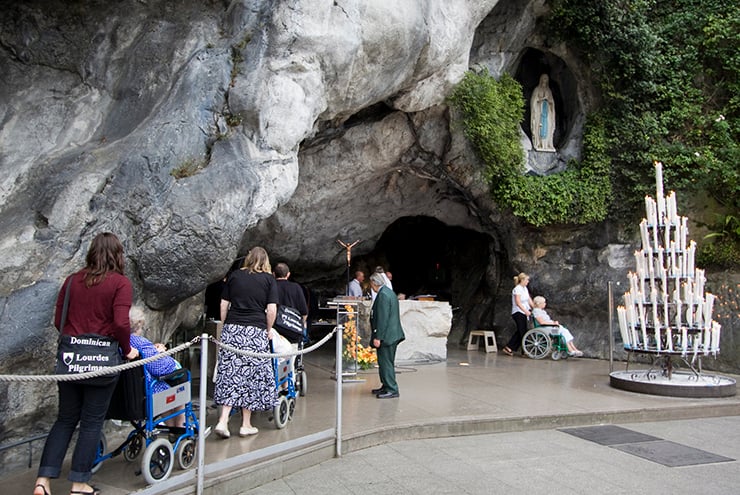One hundred and sixty-six years ago, a “beautiful lady” appeared to an impoverished, poorly educated girl in an obscure French town in the Pyrenees mountains. The girl’s name was Bernadette Soubirous; the town’s name, in standard French, was Lourdes.
After several more appearances of “the beautiful lady,” Bernadette—who had never claimed to be seeing the Virgin Mary—was directed to ask the lady who she was. Came the reply, in the local dialect in which Bernadette and the lady conversed: “Que soy era Immaculada Concepciou.”
Bernadette had no idea what this meant, but she soon learned. Today, a great shrine stands where Our Lady appeared to Bernadette, and Bernadette is a canonized saint.
From the very beginning, Lourdes has been known for healing. And the cures officially recognized by the Church as miraculous include a number, like the case of Vittorio Micheli, that are quite extraordinary. Micheli came to Lourdes as a young man in 1963 at the urging of his mother when a tumor in his left hip was discovered and so disabled him that oncologists were certain he was beyond existing medical treatment and would die. After spending time in Lourdes, bathing in the waters, and praying he returned to his native Italy to discover that not only was he cancer-free, the debilitating loss of bone, muscle, and other ravages of the cancer were gone.
Now an octogenarian, Micheli has been returning to the grotto for decades, serving as a “brancardier” or stretcher-bearer for the infirm who come there seeking the sort of peace and healing that changed Micheli’s life. In fact, the graces of this place even extended so far as to bring Micheli an introduction to the woman who later became his wife.
As this union attests, the graces of Lourdes extend beyond the number of officially recognized miracles, which is actually quite small, some 70 in all.
That small number, despite the remarkable nature of many of the individual cases, is not what keeps bringing millions to Lourdes.
Lourdes is also that rare place where many of the thousands of volunteers who make it possible for the very sick and severely disabled to occupy that spotlight come back year after year, so meaningful and moving do they find the work.
Finally, Lourdes is that rare place where many ordinary pilgrims, including some who are not at all religious, claim to experience something they, too, regard as extraordinary. The numinous becomes visible, the transcendent immanent, in ways rare in our time.
Let us strive to make more of our world like Lourdes at its best, and the profoundly sick and disabled people in our lives feel like they are there, under Mary’s mantle and at Bernadette’s side.

Leave a Reply